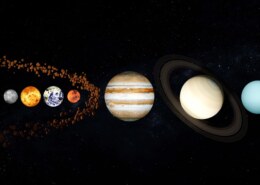Does Mars Have A Tectonic System?
Mars is believed not to have plate tectonics, because after its formation, the planet was a sizzling mass of molten rock that cooled over time to form a fixed crust around a rocky mantle, but it is not known how hot the planet’s core is today.
Earth is the only planet with plate tectonics where the crust is split into bits (plates) that float on top of the mantle, although there is now some evidence that Jupiter’s moon, Europa, does too.
Scientific Discovery On Mars On 2012
Today, Mars is believed to be largely tectonically inactive. However, observational evidence and its interpretation suggests that this was not the case further back in Mars’ geological history.

For decades, many scientists believed that plate tectonics did not exist anywhere else in our solar system except on Earth.
Now a scientist at the University of California named An Yin has discovered that this geological phenomenon, which involves the movement of huge plates of Earth’s crust beneath the planet’s surface, also exists on Mars.
“Mars is at a primitive stage of plate tectonics. It gives us a glimpse of how the early Earth may have looked and may help us understand how plate tectonics began on Earth,”
Said An Yin, a UCLA professor of Earth and space sciences and the sole author of the new research.
Yin made the discovery during his analysis of satellite images from a NASA spacecraft known as THEMIS (Time History of Events and Macroscale Interactions during Substorms) and from the HIRISE (High Resolution Imaging Science Experiment) camera on NASA’s Mars Reconnaissance Orbiter in 2012. He analyzed about 100 satellite images — approximately a dozen were revealing of plate tectonics.
Yin has conducted geologic research in the Himalayas and Tibet, where two of Earth’s seven major plates divide.
“When I studied the satellite images from Mars, many of the features looked very much like fault systems I have seen in the Himalayas and Tibet, and in California as well, including the geomorphology,” said Yin, a planetary geologist.
Mars has a linear volcanic zone, which Yin said is a typical product of plate tectonics.
“You don’t see these features anywhere else on other planets in our solar system, other than Earth and Mars,” said Yin.
On the surface of Mars is the longest and deepest canyon system in our solar system, known as Valles Marineris (Latin for Mariner Valleys, after the Martian Mariner 9 orbiter discovered in 1971-72). It is nearly 2,500 miles long – about nine times longer than Earth’s Grand Canyon. Scientists have been wondering for four decades how it formed. Was it a large crack in the Mars shell that opened up?
“In the beginning, I did not expect plate tectonics, but the more I studied it, the more I realized Mars is so different from what other scientists anticipated,”
“I saw that the idea that it is just a big crack that opened up is incorrect. It is really a plate boundary, with horizontal motion. That is kind of shocking, but the evidence is quite clear. Yin said.
“The shell is broken and is moving horizontally over a long distance. It is very similar to the Earth’s Dead Sea fault system, which has also opened up and is moving horizontally.”
The two plates divided by Mars’ Valles Marineris have moved approximately 93 miles horizontally relative to each other, Yin said. California’s San Andreas Fault, which is over the intersection of two plates, has moved about twice as much — but Earth is about twice the size of Mars, so Yin said they are comparable.
Yin, whose research is partly funded by the National Science Foundation, calls the two plates on Mars the Valles Marineris North and the Valles Marineris South.
In general, there is no unequivocal evidence on Mars that its surface was formed by Earth-type plate tectonics.
However, in some places, orbiting satellites have recorded magnetic anomalies in the Martian crust that are linear in shape and alternate in polarity.
Some authors argue that they share a common origin with similar bands on the Earth’s seafloor, which are attributed to the gradual formation of new crust on the spreading mid-ocean ridges.
Other authors argue that large-scale strike-slip fault zones can be detected on the surface of Mars (e.g. in the Valles Marineris Trench), which can be compared to transform-type faults on Earth, such as the San Andreas and Dead Sea faults.
These observations give some indication that at least some parts of Mars may have been exposed to plate tectonics in the deep geological past.



Leave an answer
You must login or register to add a new answer.